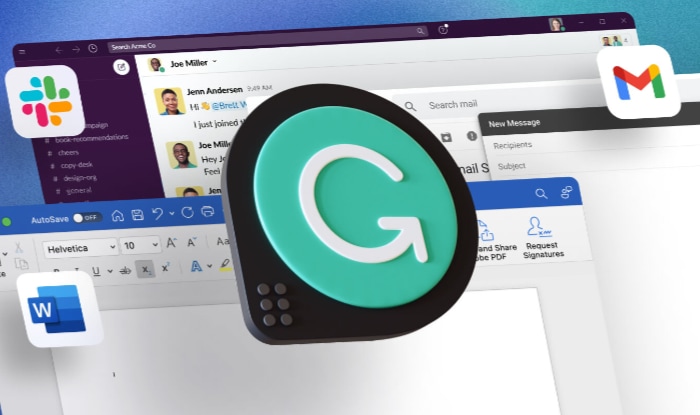Why Is Grammarly So Expensive? Cost Structure Explained

Grammarly has become almost synonymous with writing assistance for countless users around the globe. Whether you're drafting an academic paper, crafting an email for work, or even writing a social media post, this powerful tool is designed to catch grammatical errors, suggest better word choices, and even identify instances of plagiarism.
But there's a catch—many users find that the premium version of Grammarly comes with a hefty price tag. Why is this so? This question resonates among professionals, students, and anyone serious about perfecting their writing.
The Cost Structure of Grammarly
Grammarly offers a variety of plans to suit the diverse needs of its user base. From students to professionals and organizations, there's an option for everyone.
However, the question of why it's so expensive often comes up when discussing its Premium and Business plans.
Overview of Grammarly Plans
Grammarly comes in three main variants—Free, Premium, and Business. Each serves a particular purpose and comes with its own set of features and pricing.
- Free Plan: Provides basic grammar and spelling checks.
- Premium Plan: Adds advanced grammar checks, vocabulary enhancement, and a plagiarism detector among other features.
- Business Plan: Designed for teams, it includes all Premium features plus team-specific benefits like a style guide.
Subscription Models
One noticeable aspect of Grammarly's pricing is its flexibility in terms of subscription duration. Users can opt for monthly, quarterly, or annual plans, each coming with its own cost implications.
- Monthly: Typically, a more expensive option per month.
- Quarterly: A moderate discount is available for committing to three months.
- Annual: The most economical option if you commit for an entire year.
Premium Features and Their Influence on Cost
The Premium plan isn't merely an extension of the Free plan; it offers a comprehensive suite of additional features. These range from sophisticated suggestions on sentence structure and style, to robust plagiarism checking tools.
These add-ons significantly contribute to the cost of the plan.
Business Plan Tailored for Teams
The Business plan is specifically designed for organizational use and comes at a different pricing point altogether. It allows for multiple user accounts, administrative controls, and priority support, which justifies its higher pricing tier.
Development and Maintenance Costs
Creating a sophisticated tool like Grammarly isn't a one-time effort; it requires ongoing development and maintenance. It is essential to explore these hidden operational expenditures to fully comprehend why Grammarly's premium offerings may seem pricey.
Initial Development Costs
The development of a writing assistant as robust as Grammarly is a labor-intensive process. Specialized teams of linguists, data scientists, and software developers work in tandem to build its algorithms.
The costs associated with hiring such experts are substantial and inevitably influence the price of the final product.
Continuous Updates and Algorithmic Adjustments
Grammarly is never static; it evolves to meet the changing needs of language and technology. Every software update involves rigorous testing and refinement.
While updates are essential for maintaining the tool's efficacy, they come at a price, further escalating the operational costs.
Infrastructure and Data Security
The backend infrastructure of Grammarly is no less complicated than its front-end features. Maintaining servers, ensuring uptime, and keeping user data secure are ongoing processes that necessitate considerable investment.
This is even more relevant in the era of cybersecurity threats, where data protection is of paramount importance.
Customer Support and User Training
Quality customer service is another area where Grammarly invests significantly. Whether it’s resolving technical issues or aiding in user onboarding, a dedicated team is always at hand to assist users.
Offering such high standards of customer support also contributes to the operational costs.
Quality Control Measures
Lastly, Grammarly engages in extensive quality control measures to ensure that users receive error-free and effective assistance. This involves manual reviewing, extensive testing, and periodic auditing of the software's performance.
Value Addition through Features
Often the cost of a product is justified by the value it brings to the consumer. In the case of Grammarly, the multitude of specialized features in its Premium and Business plans offer significant value addition.
Advanced Grammar and Style Checks
While the Free plan offers basic grammar and spelling checks, the Premium version takes it a step further. It provides advanced checks for sentence structure, style, and tone, ensuring that your writing is not just correct but also impactful.
Vocabulary Enhancement
This feature suggests synonyms and better word choices, elevating the quality of your writing. Whether you are drafting an academic essay or writing a business proposal, richer vocabulary can set your work apart.
Plagiarism Detector
One of the standout features of Grammarly Premium is its plagiarism detector. It scans billions of web pages to ensure that your writing is original.
This is a crucial feature for academics, writers, and professionals alike, and it adds a significant layer of utility to the tool.
Real-Time Document Insights
Grammarly Premium offers an insightful document summary, giving you real-time statistics about readability, word count, and sentence length. This allows you to gauge the quality of your work instantly.
Writing Style Guide
Available in the Business plan, the writing style guide allows organizations to maintain a consistent writing style across multiple documents and writers. This can be particularly useful for corporations aiming to uphold brand consistency in all communications.
Priority Support
The Business plan offers priority email support as one of its distinguishing features, ensuring that any issues you face are resolved promptly. This is especially crucial in professional or academic settings where time-sensitive concerns require immediate attention.
The availability of Priority Support adds another layer of value to the Business plan, which further justifies its higher pricing tier compared to the Premium plan.
Comparison with Other Tools

In assessing the cost of Grammarly, it's useful to compare it with other writing assistant tools on the market. This comparative lens can offer insights into what sets Grammarly apart and whether its higher price is justified in terms of features and quality.
Range of Features
Various writing assistants offer a plethora of features, from basic spelling and grammar checks to more advanced functionalities like style recommendations and plagiarism checks. While some tools may excel in one area, they may lack in others.
Grammarly, on the other hand, provides a comprehensive set of features that cover multiple aspects of writing assistance.
Efficacy and Accuracy
Not all writing assistant tools are created equal when it comes to the accuracy of their suggestions and detections. Grammarly has invested substantially in fine-tuning its algorithms, which translates into more precise and contextually appropriate suggestions.
This is an important factor that can influence the choice of a writing assistant tool.
Flexibility and Customization
Another angle to consider is how customizable a tool is to individual needs or specific industries. While some tools offer industry-specific writing templates or style guides, Grammarly provides a broad-based yet customizable experience that caters to various writing needs.
User Experience and Interface
A tool's interface can be a determining factor in its usability. Some writing assistants may have a steep learning curve or a cluttered interface that hinders productivity.
Grammarly, in contrast, offers an intuitive and user-friendly interface, enhancing the writing process rather than complicating it.
Market Reputation
Finally, consumer trust and market reputation can significantly impact the perceived value and consequently, the price of a product. Grammarly has garnered a strong reputation for reliability and effectiveness, which can explain its premium pricing.
Economies of Scale and Niche Targeting
Economies of scale and niche targeting are two essential business principles that can influence the pricing strategy of a product. Let's examine how these principles apply to Grammarly and contribute to its cost structure.
Economies of Scale
For any software product, initial development costs are typically high, but they can be spread out over a larger user base as more people adopt the product. In the case of Grammarly, the service boasts millions of users, which ideally should lead to lower per-user costs.
However, the ongoing nature of its operational requirements, like regular updates and customer support, offsets these economies of scale to some extent. Thus, while the principle of economies of scale applies, it doesn't drastically reduce the end cost to the consumer.
Niche Targeting
Grammarly is unique in that it offers highly specialized features tailored to specific types of users—be they students, professionals, or entire organizations. These specialized features come at a development cost but can command higher pricing due to the high value they provide to these targeted niches.
Specialization allows Grammarly to charge a premium, especially for features like plagiarism detection, which are indispensable for academic users, and the style guide, essential for business users to maintain brand consistency.
Price Discrimination Strategies
Differentiated pricing for various plans also plays a role. The Free plan caters to casual users who require basic services.
The Premium and Business plans target users with more specialized needs, which justifies their higher pricing. This type of price discrimination allows Grammarly to serve a broad spectrum of users while optimizing revenue.
Brand Loyalty and Customer Lifetime Value
Over time, users who find significant value in Grammarly's offerings are likely to continue using the service, contributing to long-term revenue. This sustained customer lifetime value (CLV) can justify an initially higher cost, as it results in more extended periods of subscription renewals.
Barriers to Entry
Finally, the sophisticated technology and expertise required to create a product like Grammarly form a barrier to entry for potential competitors. This allows Grammarly to maintain its pricing structure without losing its competitive edge.
When economies of scale and niche targeting are considered in tandem with Grammarly's pricing, it is apparent that these business principles significantly influence the product's cost structure. While economies of scale offer some leverage, the specialized needs of niche target groups and the associated development costs factor heavily into the final pricing.
User Experience and Branding
The elements of user experience and branding often have an indirect but significant impact on product pricing. For Grammarly, these factors not only contribute to its market position but also justify the cost from a consumer perspective.
User Interface Design
A well-designed user interface contributes to ease of use, a factor that can significantly enhance user experience. Grammarly's platform is intuitive, designed to facilitate the writing process rather than obstruct it.
An accessible user interface not only aids user retention but can also be a compelling reason for new users to choose Grammarly over competitors, even at a higher price point.
Brand Perception
The way a brand is perceived can have a considerable impact on how much consumers are willing to pay for its products. Grammarly has invested in creating a brand identity that resonates with reliability, quality, and innovation.
These attributes contribute to its premium pricing, as consumers often associate higher cost with better quality.
Marketing and Outreach
Grammarly employs a multi-faceted marketing strategy that includes digital advertising, influencer partnerships, and educational content. Effective marketing not only attracts new users but also helps to justify the cost of the product by articulating its value proposition clearly.
Consumer Feedback Loop
Listening to users and implementing their feedback is a cycle that yields improvements in the product over time. Grammarly has a robust mechanism for gathering and integrating user feedback, which results in regular updates and feature additions.
Such ongoing improvements enhance the user experience and, in turn, validate the service's cost.
Conclusion
Drawing together the various insights gained from examining Grammarly's pricing, we see a complex interplay of factors. These range from the straightforward operational costs of development and maintenance, to the subtler aspects of brand perception and market positioning.
Elements like specialized feature sets and comparison with other market offerings further contribute to Grammarly's premium pricing. Overall, the intricacies behind the cost of this tool are driven by a blend of tangible and intangible factors, each adding a layer of justification to the price tag.


